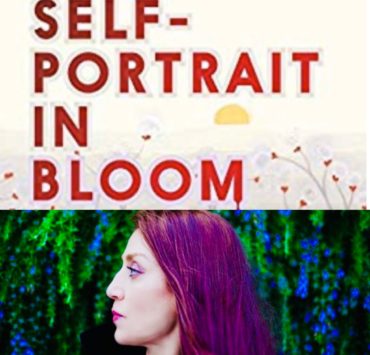
And so began a new life, illuminated already in the choosing of what to translate, the journey into the literature of my mother tongue, treasure troves of the distant and yet familiar bound in old, frayed editions that traveled thousands of miles across an ocean to wait stacked in moving boxes, then passed on from parent to child, passaged city to city to sit silently on bookshelves.
A new life ignited even in the summoning of all the Persian language that had lain dormant in me, in the effort and the reaching out to more experienced readers to understand three pages of poetry, word by word, line by line, idea by idea, image by image, reference by reference, only to encounter the real task at hand, the infinite possibility of interpretation, and then the delicate labor of the poem’s pilgrimage from the original into the new, target language. In rendering that one poem lay the birth of all the questions a translator would ever ask of herself as she realized the responsibility of the work, the epiphany that each of the thousand choices to be made danced the poem into wildly distinct living, breathing creatures, and that those selections made the difference between a superior or an amateur, or lexically faithful yet drab or loyal yet innovative poem in the new language. The questions of how much of the original culture to leave in—what I later learned was a practice of “foreignization” in translation theory—and how much to assimilate it to the new culture, or “domestication,” and how easily a literature becomes colonized in extreme practices of domestication.
Suddenly, there was an outlet, a magical gateway into my inner worlds whose bridging had not yet discovered expression. A scaffolding for wordsmithing, verbal creativity, solving linguistic puzzles, for pulling from the universe to render a word or a line, for exercising the left and the right brains. For combining math and craft with art and alchemy. This unavoidable practice of personal, cultural, temporal, spatial, and linguistic translation that had consumed immigrant-me on every level, the negotiations of the self vis-à-vis both sides, now had utility.
I. FELL. IN. LOVE.
More and more, the translator’s invisibility began to dawn on me. For example, Milan Kundera’s book, The Unbearable Lightness of Being, came to the forefront of popular consciousness after Philip Kaufman’s 1988 film of the successful book. But does anyone know the name of the book’s distinguished and prolific translator, Michael Henry Heim? Heim was also the translator of Thomas Mann’s Death in Venice, of Kundera’s The Book of Laughter and Forgetting. Or does the public take note of whose translation of Crime and Punishment or Neruda or Rumi they are reading? The invisibility of a translator was part of the reality of the book market, but does not have to be.
A few years after this discovery, and before realizing the magnitude of Heim’s legacy myself, I would get to spend an afternoon with Heim and his wife, Priscilla, at their home not far from UCLA where he taught. I was brought over to his house and introduced by a former student of his as a young translator with a multidisciplinary approach to my work. Heim and his wife sat engrossed for one whole hour to watch the video footage of ICARUS/RISE, the theatrical project I had created in which I dramatized fourteen poems from the anthology I would later finish editing and translating, Belonging: New Poetry by Iranians Around the World, as a musical-visual work. It was a most uncomfortable hour for me, squirming through a video capture of a live performance I was giving with other artists. Heim was so present, so encouraging. He introduced my work to people at PEN American Center who applied for a New York State Council on the Arts translation grant for me, the third translation award I would receive.
The poem I chose to translate with Sally was “Tavallodi Digar,” which we translated into “Another Birth,” the title poem of a book by the daring Iranian poet Forough Farrokhzad (1934–1967) who, in battling the patriarchal fabric of society and the intelligentsia in the mid- twentieth century, reimagined the language of poetry in general, including of poetry by women.
It was on those still afternoons as I sat with Sally on my red futon under the kitchen window that showered it with sunlight, where we wept, each defending our choices, why “pond,” not “pool,” that I fell in love. I fell in love with the joyous hours of research, the probing into endless fields, the dreaming, the analogue-findings, the bond this pastime was making between the poet Farrokhzad, me, the poet Partow Nooriala who was helping me read the poem, Sally, the new poem in English, and eventually its new readers. I was a link in that lineage of love.
This love carried me through Belonging: New Poetry by Iranians Around the World, which took five years to edit and translate. The idea was to show that Iran had a much wider and more recent poetic tradition than Rumi, the thirteenth century Persian poet readers of English know from the abundance of his work in translation, not to mention the “new-age-ifications” of his work saturating the market and popular culture.
My hunger for knowledge led me to conferences populated by other like-minded writer-translators who discovered literary worlds they wanted to share. In the process, I awakened to the marginality of translating a culture that suffers from brutal sanctions, one that not only offers no support to its writers and artists through advocacy, international exchanges, grants and opportunities, but in fact, persecutes and murders its artists.
Iran is not a signatory of the Berne Convention for the Protection of Literary and Artistic Works and does not have a bilateral relationship with the United States. Iranian publishers translate and publish books from other countries without extending royalties. Therefore, little are the incentives for those publishers, particularly those whose books are being black-marketed in Iran, to obtain rights, commission translations, and publish Iranian literature produced in Iran.
For the most part, because of Iran’s refusal to become a signatory of the Berne Convention, works first produced in Iran are considered in the public domain, and its translators are often free to translate those texts from the Persian. Most translators want to have rights anyway, for ethical reasons, and because most publishers ask for rights. All in all, the copyright landscape is murky legal grounds, a no man’s land for translators from the Persian. Without standardized and well-defined protocol, with decades of sanctions marring international relations between Iran and the United States, translators often launch from uncertain grounds.
This shifts the publishing balance in favor of literatures from countries that play nice with each other, countries that are not vilified. Translations constitute a small percentage of books published in the United States, somewhere between 0.3 and 3 percent. Literary translations are especially on the fringes. But literature translated from the Persian and published in the U.S. market stands on the fringes of the fringes. This explains the stark contrast between the availability of Iranian literature in translation versus the primacy and visibility of English translations of German, French, Italian, Spanish, even Arabic and Chinese literatures, supported through cultural institutions, awards, and mentorship programs.
Iranian literature also suffers from curation for narratives of pain and politics rather than aesthetics and innovations. Some advocates of Iranian literature self-exotify, not realizing that they fuel this curation, or perhaps they turn a blind eye in favor of lucrative careers catering to othering agendas reinforced by best-selling books like Reading Lolita in Tehran and its not-so-subtle message that brown women were saved by Henry James and Vladimir Nabokov, and not by their own thousand years of literary history.
These profiteers of crisis are emboldened since few question them. Lack of widespread access to Iran allows them to spread misinformation, skew the perspective. Even the most left-leaning liberals of the West unknowingly lap up these othered narratives that keep alive the Empire.
Niloufar Talebi’s Self Portrait in Bloom available for purchase.


Born in London to Iranian parents, Niloufar Talebi is an author, award-winning translator, interdisciplinary creator, and producer. She is the editor/translator of Belonging: New Poetry by Iranians Around the World (North Atlantic Books, 2008), and author of Self-Portrait in Bloom (l’Aleph, 2019) and creator of its operatic companion, Abraham in Flames, a San Francisco Chronicle Notable Performance of 2019. Her projects have been commissioned by and presented at Carnegie Hall, Cal Performances, the Kennedy Center, Brooklyn Academy of Music, and Stanford Live. She is the recipient of numerous awards and distinctions, and 5 translations prizes including a 2015 National Endowment for the Arts Literature Fellowship for her translations of Ahmad Shamlou’s poetry. Talebi is a frequent speaker at festivals and conferences. In 2019, she was presented at TedxBerkeley, the Bay Area Book Festival, AWP, and Litquake.







